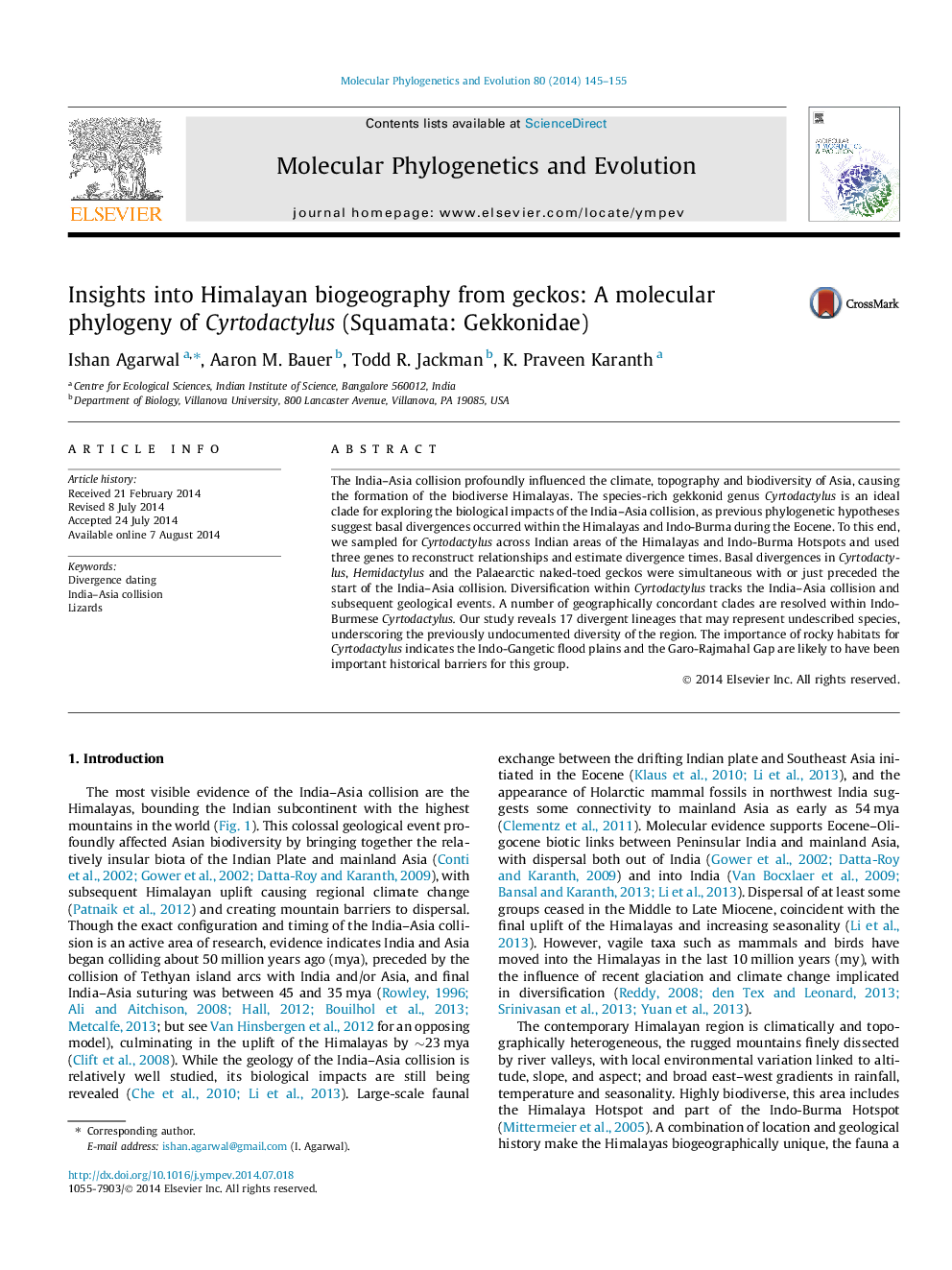| Article ID | Journal | Published Year | Pages | File Type |
|---|---|---|---|---|
| 2833811 | Molecular Phylogenetics and Evolution | 2014 | 11 Pages |
•Species diversity vastly underestimated – 17 potentially new Cyrtodactylus from the Himalayas and NE India.•Diversification within Cyrtodactylus tracks the India–Asia collision and subsequent geological events.•A number of geographically concordant clades are resolved within Indo-Burmese Cyrtodactylus.
The India–Asia collision profoundly influenced the climate, topography and biodiversity of Asia, causing the formation of the biodiverse Himalayas. The species-rich gekkonid genus Cyrtodactylus is an ideal clade for exploring the biological impacts of the India–Asia collision, as previous phylogenetic hypotheses suggest basal divergences occurred within the Himalayas and Indo-Burma during the Eocene. To this end, we sampled for Cyrtodactylus across Indian areas of the Himalayas and Indo-Burma Hotspots and used three genes to reconstruct relationships and estimate divergence times. Basal divergences in Cyrtodactylus, Hemidactylus and the Palaearctic naked-toed geckos were simultaneous with or just preceded the start of the India–Asia collision. Diversification within Cyrtodactylus tracks the India–Asia collision and subsequent geological events. A number of geographically concordant clades are resolved within Indo-Burmese Cyrtodactylus. Our study reveals 17 divergent lineages that may represent undescribed species, underscoring the previously undocumented diversity of the region. The importance of rocky habitats for Cyrtodactylus indicates the Indo-Gangetic flood plains and the Garo-Rajmahal Gap are likely to have been important historical barriers for this group.
Graphical abstractFigure optionsDownload full-size imageDownload as PowerPoint slide
